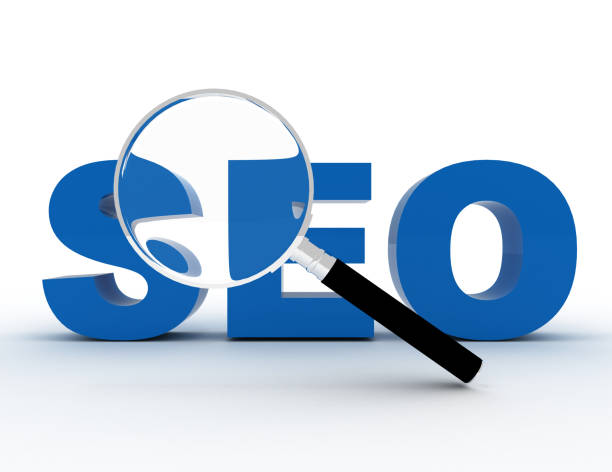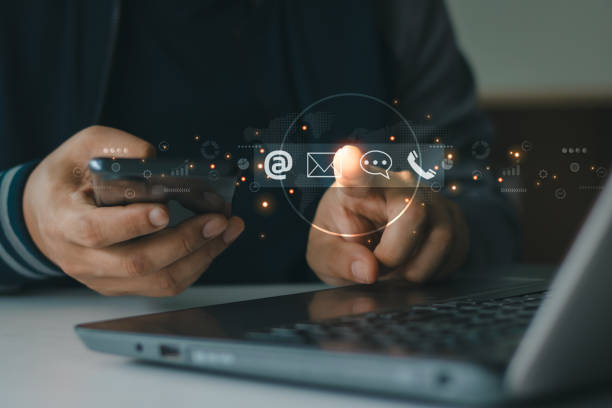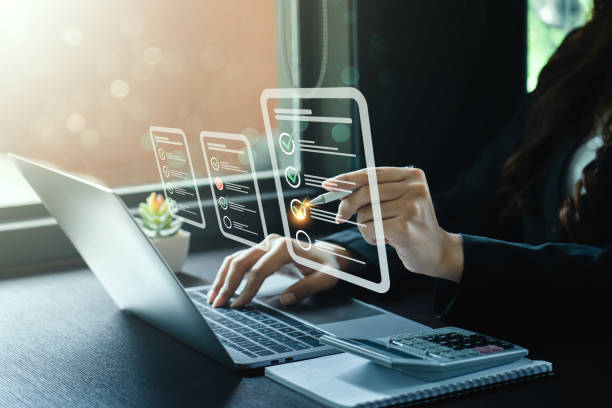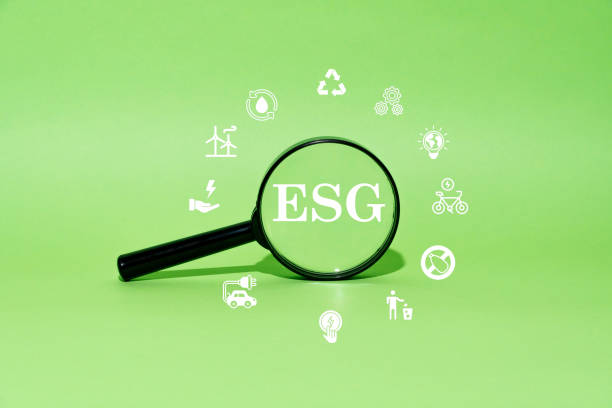What is On-Page SEO and Why Does It Matter?

What is On-Page SEO and Why Does It Matter?
On-Page SEO refers to the techniques and actions performed within your website to improve your site’s ranking in search engine results.
This process includes optimizing content, site structure, HTML tags, and other internal elements of the site.
SEO is essential for the success of any website, as it helps search engines better understand the content of your site and display it to relevant users.
In other words, On-Page SEO ensures that your website is optimized for search engines and can attract more organic traffic.
By focusing on improving controllable factors within the site, On-Page SEO helps increase the site’s visibility in search results.
This not only attracts more visitors but also helps improve user experience.
A website with a well-organized structure and optimized content is more attractive to users, and the likelihood of them returning to the site increases.
Therefore, investing in On-Page SEO is a smart strategy for achieving long-term success in the online world.
On-Page SEO not only improves your site’s ranking but also increases users’ credibility and trust in your brand.
In short, On-Page SEO helps you to:
- Help search engines better understand the content of your site.
- Improve your site’s ranking in search results.
- Attract more organic traffic.
- Provide a better user experience.
- Increase user credibility and trust.
Given these benefits, On-Page SEO should be considered an essential part of your online marketing strategy.
Is your company’s website as professional and reliable as it should be? With specialized corporate website design by Rasaweb, create an online presence that reflects your credibility and attracts more customers.
✅ Building a powerful and professional image of your brand
✅ Turning visitors into real customers
⚡ Get a free consultation right now!
Keyword Research: Finding the Best Phrases for SEO

Keyword Research: Finding the Best Phrases for SEO
Keyword research is one of the most important steps in On-Page SEO.
This process involves identifying the phrases and words that users use to search for information related to your business.
By finding the right keywords, you can optimize your content to rank higher in search results for these phrases.
Using keyword research tools such as Google Keyword Planner, Ahrefs, and SEMrush can help you in this area.
These tools provide information such as search volume, competition, and related keywords.
To conduct effective keyword research, you should pay attention to the following:
- User intent: What are users looking for when searching for these words?
- Search volume: How popular is each keyword?
- Competition: How competitive is it to rank for these keywords?
- Relevance: How relevant are the keywords to your business?
After finding the right keywords, you should use them naturally and intelligently in your content.
Avoid using too many keywords (keyword stuffing), as this can damage your site’s ranking.
Instead, try to use keywords in titles, subtitles, main text, meta descriptions, and image tags.
The main goal should be to provide valuable and relevant content for users, not just optimization for search engines.
On-Page SEO requires attention to detail and continuous analysis.
By conducting keyword research regularly and updating your strategy, you can achieve better results.
Content Optimization for SEO: Creating Engaging and Valuable Content
![]()
Content Optimization for SEO: Creating Engaging and Valuable Content
Content is king! This phrase is very famous in the world of SEO and demonstrates the importance of content in ranking sites.
To optimize content for On-Page SEO, you need to create content that is engaging, valuable, and relevant to users’ needs.
Your content should answer users’ questions, solve their problems, and provide useful information.
Also, your content should be such that users want to share it and link to it.
Content marketing is a great way to optimize your site.
To create optimized content, pay attention to the following:
- Keyword Research: Identify the right keywords and use them naturally in your content.
- Content Structure: Divide your content into smaller sections and use titles and subtitles.
- Readability: Use short and simple sentences and avoid long paragraphs.
- Images and Videos: Use relevant images and videos to make your content more attractive.
- Internal and External Linking: Link to other pages on your site and to other reputable sites.
- Updates: Update your content regularly to provide new and accurate information.
By following these tips, you can create content that is both attractive to users and optimized for search engines.
On-Page SEO with good content increases your site’s ranking and attracts more traffic.
An effective On-Page SEO strategy prioritizes quality content.
| Element | Description |
|---|---|
| Page Title | Must contain the main keyword and be attractive. |
| Meta Description | Should provide an engaging summary of the page’s content. |
| Headings (H1-H6) | Should specify the content structure and contain keywords. |
| Main Text | Should be valuable, relevant, and optimized for keywords. |
Optimizing Title and Meta Description Tags

Optimizing Title and Meta Description Tags
Title Tags and Meta Descriptions are among the most important On-Page SEO elements.
These tags are displayed in search results and play an important role in attracting users to your site.
The title tag should be a summary of the page’s content and contain the main keyword.
The length of the title tag should not exceed 60 characters, otherwise, it will be truncated in search results.
The meta description should provide an engaging summary of the page’s content and encourage users to click on your site’s link.
The length of the meta description should not exceed 160 characters.
To optimize title and meta description tags, pay attention to the following:
- Keyword: Use the main keyword in the title tag and meta description.
- Attractiveness: The title tag and meta description should be attractive and engaging.
- Relevance: The title tag and meta description should be relevant to the page’s content.
- Appropriate Length: Keep the length of the title tag and meta description within the allowed range.
- Unique: Each page should have a unique title tag and meta description.
Title tags and meta descriptions are the first things users see in search results, so optimizing them can have a significant impact on your site’s traffic.
On-Page SEO by optimizing these tags can increase your site’s click-through rate (CTR).
Does your company’s website create a professional and lasting first impression on potential customers? With professional corporate website design by Rasaweb, not only does it reflect the credibility of your brand, but it also opens a path for your business growth.
✅ Creating a strong and reliable brand image
✅ Attracting target customers and increasing sales
⚡ Get a free consultation
Optimizing URL Structure: Creating SEO-Friendly URLs

Optimizing URL Structure: Creating SEO-Friendly URLs
Your website’s URL structure can also affect On-Page SEO.
SEO-friendly URLs should be short, descriptive, and contain keywords.
Avoid using long and complex URLs that contain meaningless numbers and letters.
SEO-friendly URLs help search engines better understand the page’s content and show users what the page is about.
An optimized URL plays an important role in ranking the site in search results.
To create SEO-friendly URLs, pay attention to the following:
- Short: Keep URLs as short as possible.
- Descriptive: URLs should describe the page’s content.
- Keyword: Use the main keyword in the URL.
- Hyphen: Use a hyphen (-) to separate words in the URL.
- Lowercase: Use lowercase letters in the URL.
By optimizing your website’s URL structure, you can help search engines better understand your site’s content and show users what your site’s pages are about.
On-Page SEO with optimized URLs increases traffic and improves your site’s ranking.
Image Optimization: Reducing Size and Using ALT Tags

Image Optimization: Reducing Size and Using ALT Tags
Images play an important role in the attractiveness and user experience of your website.
However, large images can slow down your site’s loading speed and negatively affect On-Page SEO.
To optimize images, you need to reduce their size and use ALT tags.
The ALT tag is a text description for the image that is displayed if the image fails to load and helps search engines understand the content of the image.
To optimize images, pay attention to the following:
- Reduce Size: Reduce the size of images as much as possible without reducing their quality.
- Appropriate Format: Use appropriate formats for images (JPEG for photos and PNG for images with graphics).
- ALT Tag: Add a descriptive ALT tag containing the keyword for each image.
- File Name: Choose descriptive and keyword-containing file names for images.
- Responsive: Design images responsively so that they display correctly on different devices.
By optimizing your website’s images, you can increase your site’s loading speed, improve user experience, and help search engines understand the content of your images.
On-Page SEO with optimized images increases traffic and improves your site’s ranking.
Site Loading Speed: Improving User Experience and SEO Ranking

Site Loading Speed: Improving User Experience and SEO Ranking
Site loading speed is one of the most important factors in On-Page SEO.
Users expect website pages to load quickly, and if a page takes more than a few seconds to load, the likelihood of a user leaving the site increases.
Low loading speed not only affects user experience but also negatively affects your site’s SEO ranking.
Google PageSpeed Insights is a tool for analyzing and optimizing website speed.
On-Page SEO improves site loading speed and increases site ranking and traffic.
To improve site loading speed, you can take the following steps:
- Optimize Images: Reduce the size of images and use appropriate formats.
- Reduce Code Size: Reduce the size of HTML, CSS, and JavaScript codes.
- Use CDN: Use a Content Delivery Network (CDN) to load files faster.
- Enable Cache: Enable browser cache so that files are stored in users’ browsers.
- Choose Appropriate Hosting: Use quality and fast hosting.
By improving your site’s loading speed, you can improve user experience, reduce bounce rate, and increase your site’s SEO ranking.
On-Page SEO with high speed increases user and search engine satisfaction.
| Factor | Impact on Loading Speed |
|---|---|
| Image Size | Reducing image size increases loading speed. |
| Code Size | Reducing code size increases loading speed. |
| CDN | Using CDN increases loading speed. |
| Browser Cache | Enabling cache increases loading speed. |
Site Responsiveness: Designing for Different Devices

Site Responsiveness: Designing for Different Devices
Today, most users access the internet via mobile devices.
Therefore, your website should be designed responsively to display correctly on different devices (mobile phone, tablet, desktop).
A responsive website provides a better user experience and positively affects On-Page SEO.
Responsive design is one of the website design techniques.
To make your website responsive, you can use the following techniques:
- Grid Layout: Use a Grid Layout system to design pages.
- Flexible Images: Design images flexibly to display in different sizes.
- Media Queries: Use Media Queries to apply design changes based on page size.
- Viewport Meta Tag: Place the Viewport Meta tag in the section of your site.
By making your website responsive, you can improve user experience, reduce bounce rate, and increase your site’s SEO ranking.
On-Page SEO with responsive design increases your site’s accessibility and popularity.
This plays an important role in On-Page SEO.
Are you dissatisfied with the low rate of converting visitors to customers on your online store?
Solve this problem forever with professional online store design by Rasaweb!
✅ Increase the rate of converting visitors to customers
✅ Create a great user experience and build customer trust
⚡ Get a free consultation
Internal Linking: Creating a Strong Communication Network

Internal Linking: Creating a Strong Communication Network
Internal linking means creating links between different pages of your website.
Internal linking helps search engines better understand your site’s structure and helps users easily navigate your site.
A strong internal linking strategy can improve your site’s SEO ranking and increase organic traffic.
On-Page SEO is strengthened by internal linking.
To create a strong internal linking strategy, pay attention to the following:
- Related: Links should be created between related pages.
- Link Text: Use descriptive and keyword-containing link text (anchor text).
- Number of Links: Keep the number of links on each page balanced.
- Location of Links: Place links in appropriate places on the page (for example, in the main text or at the end of the page).
- Update: Regularly check and update your internal links.
By creating a strong internal linking network, you can help search engines better understand your site’s content and help users easily navigate your site.
On-Page SEO with effective internal linking increases your site’s visibility and credibility.
Monitoring and Analysis: Tracking SEO Results and Continuous Improvement

Monitoring and Analysis: Tracking SEO Results and Continuous Improvement
On-Page SEO is an ongoing process, and to achieve desired results, you must regularly monitor your SEO results and improve your strategy based on data and analysis.
To monitor SEO results, you can use various tools such as Google Analytics and Google Search Console.
These tools provide information such as site traffic, keyword ranking, bounce rate, and other important metrics.
By analyzing SEO data, you can identify the strengths and weaknesses of your strategy and take the necessary actions to improve your site’s performance.
For example, if you notice that the ranking of a particular keyword is decreasing, you can optimize the content of the corresponding page or add more internal links to that page.
On-Page SEO requires continuous improvement.
To monitor and analyze SEO results, pay attention to the following:
- Goals: Set specific goals for your SEO.
- Metrics: Identify Key Performance Indicators (KPIs) and track them regularly.
- Tools: Use appropriate tools to monitor and analyze data.
- Analysis: Analyze data regularly and identify patterns and trends.
- Improvement: Based on the analysis, improve your SEO strategy.
By monitoring and analyzing SEO results, you can ensure that your SEO strategy is effective and helps you achieve your goals.
On-Page SEO is a dynamic process, and with continuous tracking and improvement, you can improve your site’s ranking and attract more organic traffic.
Take On-Page SEO seriously.
Frequently Asked Questions
| Question | Answer |
|---|---|
| What is On-Page SEO? | It refers to a set of actions that are performed within a website to improve its ranking in search engines. |
| Why is On-Page SEO important? | Because it helps search engines better understand the content and structure of your site and improves the user experience. |
| What are the most important elements of On-Page SEO? | Title and meta descriptions, keywords, URL structure, quality content, image optimization, internal linking, and site speed. |
| How do we optimize the Title Tag and Meta Description? | The title should include the main keyword and be attractive, and the meta description should be an engaging summary of the content with relevant keywords. |
| What is the role of keywords in On-Page SEO? | Keywords help search engines understand what the page’s content is about and should be used naturally and intelligently in the text. |
| How is image optimization for On-Page SEO done? | By compressing the size, using descriptive file names, and filling the Alt tag with relevant descriptions and keywords. |
| What is internal linking and what is its use? | Connecting different pages of the site to each other. This helps to distribute the page authority and improve the crawling of search engines. |
| What is the importance of site loading speed in On-Page SEO? | High speed improves the user experience and is one of the important ranking factors for search engines like Google. |
| What is the impact of site responsiveness (Mobile-Friendliness) on On-Page SEO? | Given the increase in mobile users, responsiveness is essential for providing a good user experience on all devices and prioritizing Google’s mobile index. |
| What are the important factors related to content in On-Page SEO? | Originality, quality, comprehensiveness, readability, appropriate use of headings (H1, H2, …), and regular content updates. |
And other services of Rasa Web Advertising Agency in the field of advertising
Intelligent Reportage: A professional solution to attract customers with a focus on precise targeting of the audience.
Intelligent Data Analysis: A combination of creativity and technology for user engagement through marketing automation.
Intelligent Direct Marketing: A dedicated service to grow user engagement based on intelligent data analysis.
Intelligent UI/UX: A professional solution for digital branding with a focus on optimizing key pages.
Intelligent Sales Automation: A creative platform to improve customer behavior analysis with an attractive user interface design.
And hundreds of other services in the field of internet advertising, advertising consulting, and organizational solutions
Internet Advertising | Advertising Strategy | Advertisement Reportage
Sources
SEO Basics in Hubspot
,On-Page Optimization in Moz
,On-Page SEO in Semrush
,On-Page SEO Guide in Ahrefs
? Transform your business in the digital world with Rasa Web Digital Marketing Agency. By providing comprehensive services including SEO, content marketing, and multilingual website design, we smooth the path for your growth and success. For free consultation and to learn more about our solutions, contact us today and create a bright future for your business.
📍 Tehran, Mirdamad Street, next to the Central Bank, South Kazerun Alley, Ramin Alley No. 6




